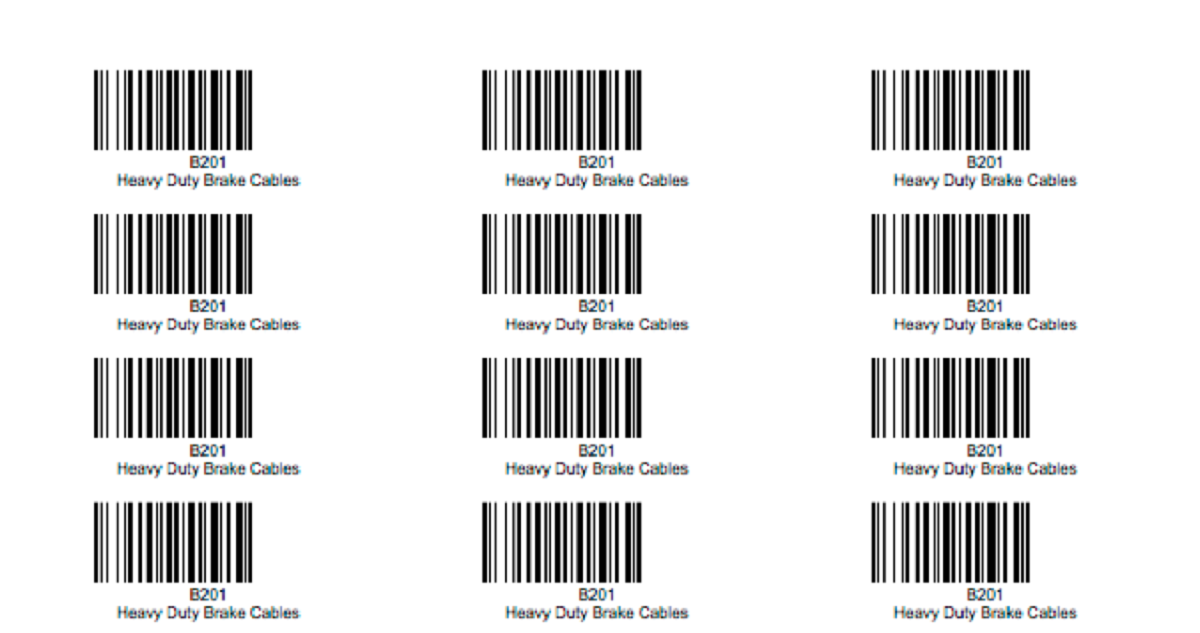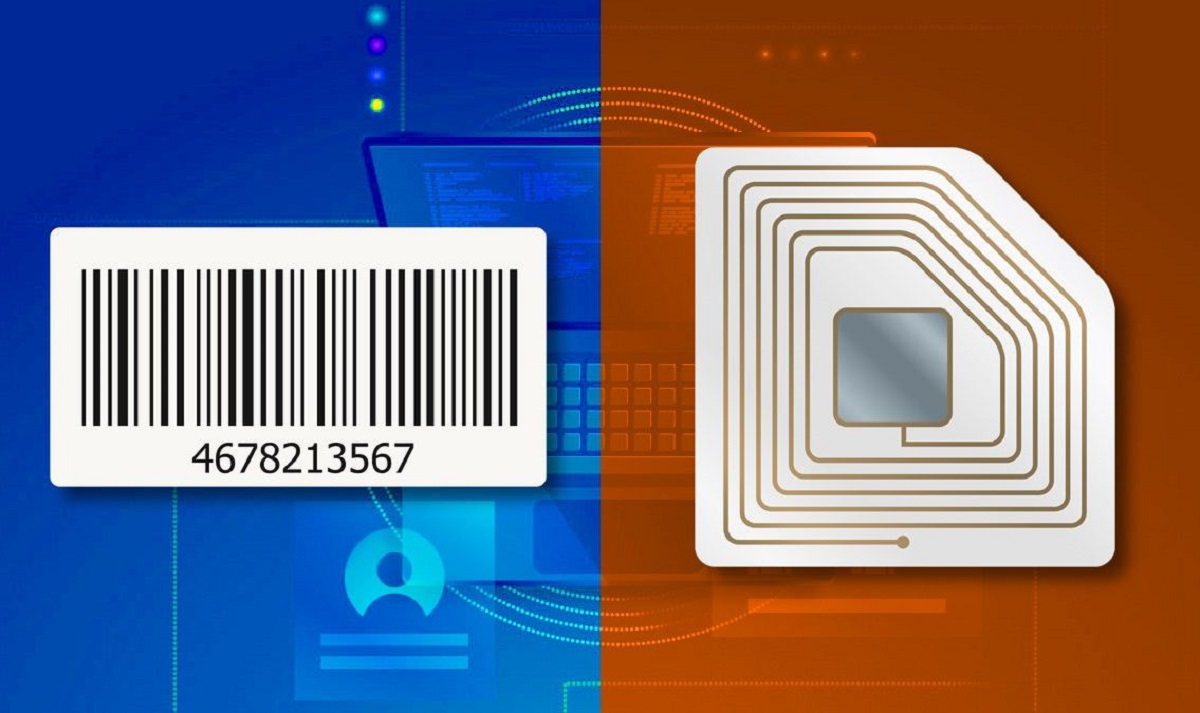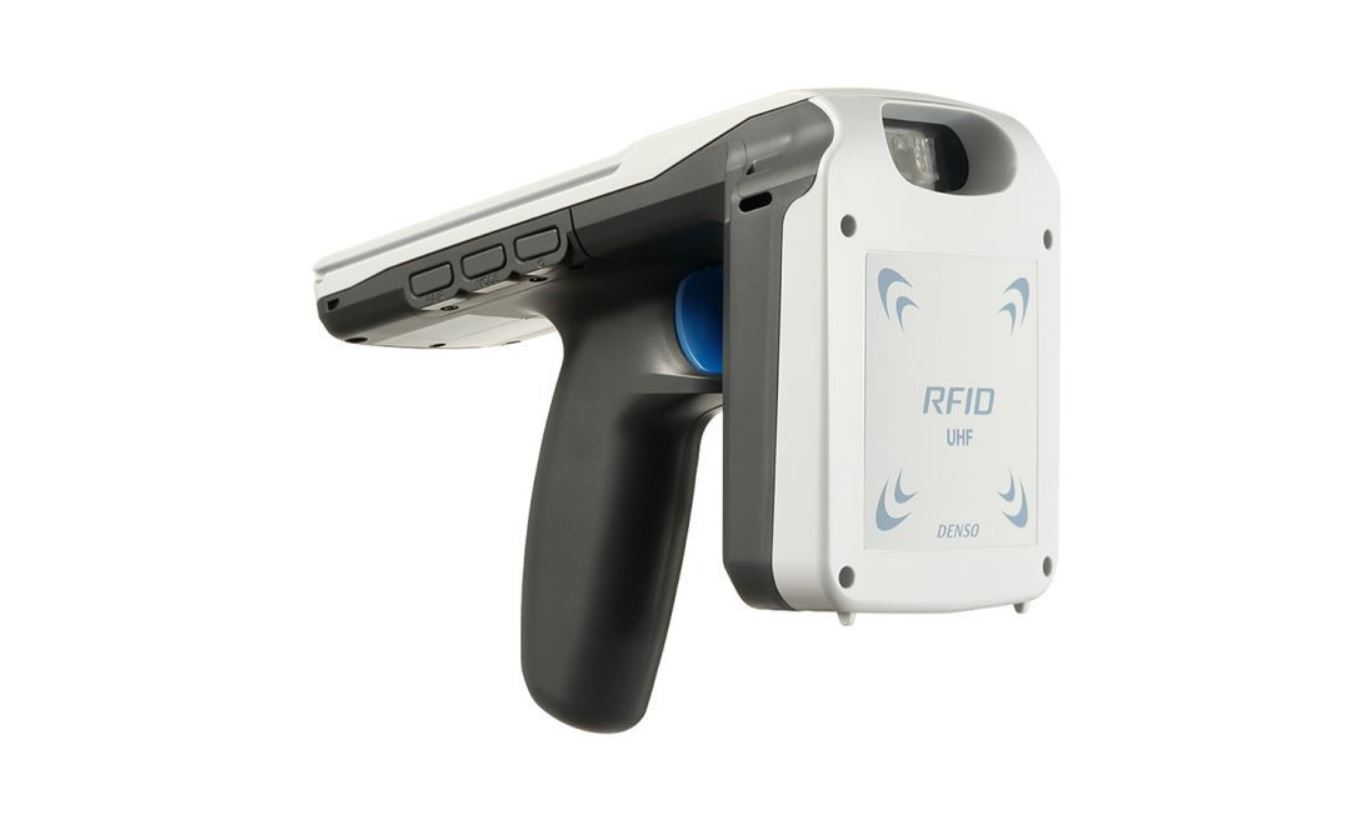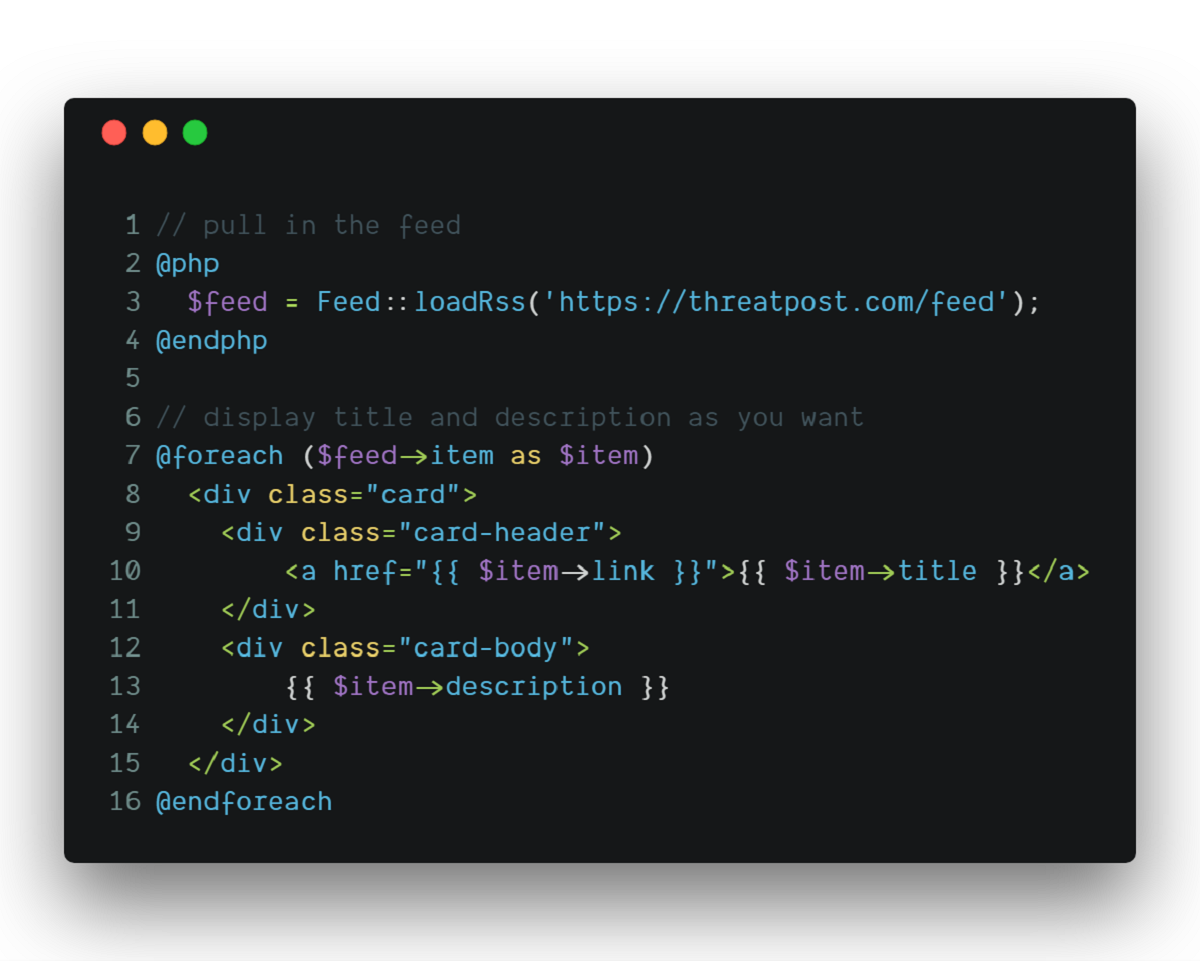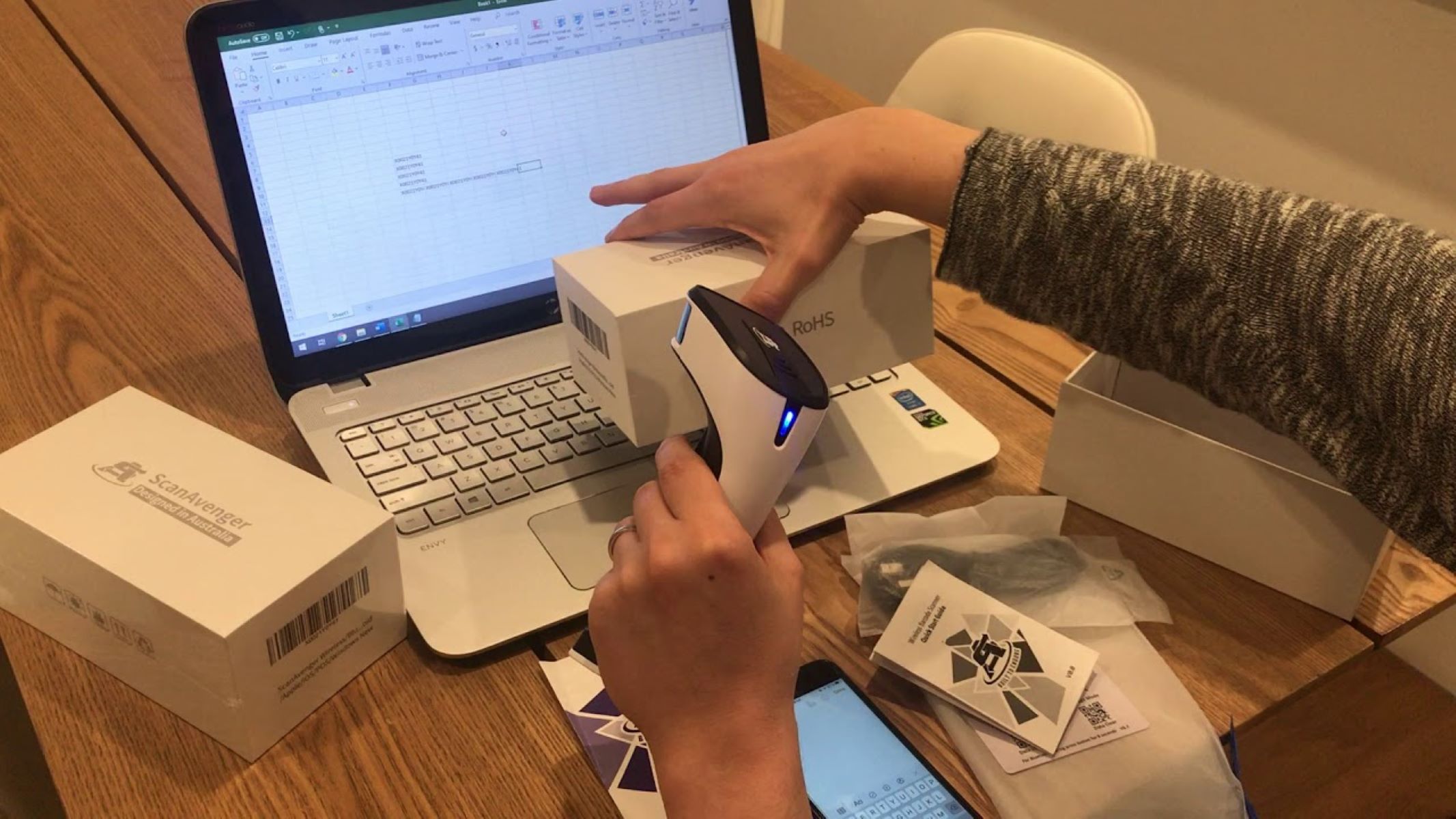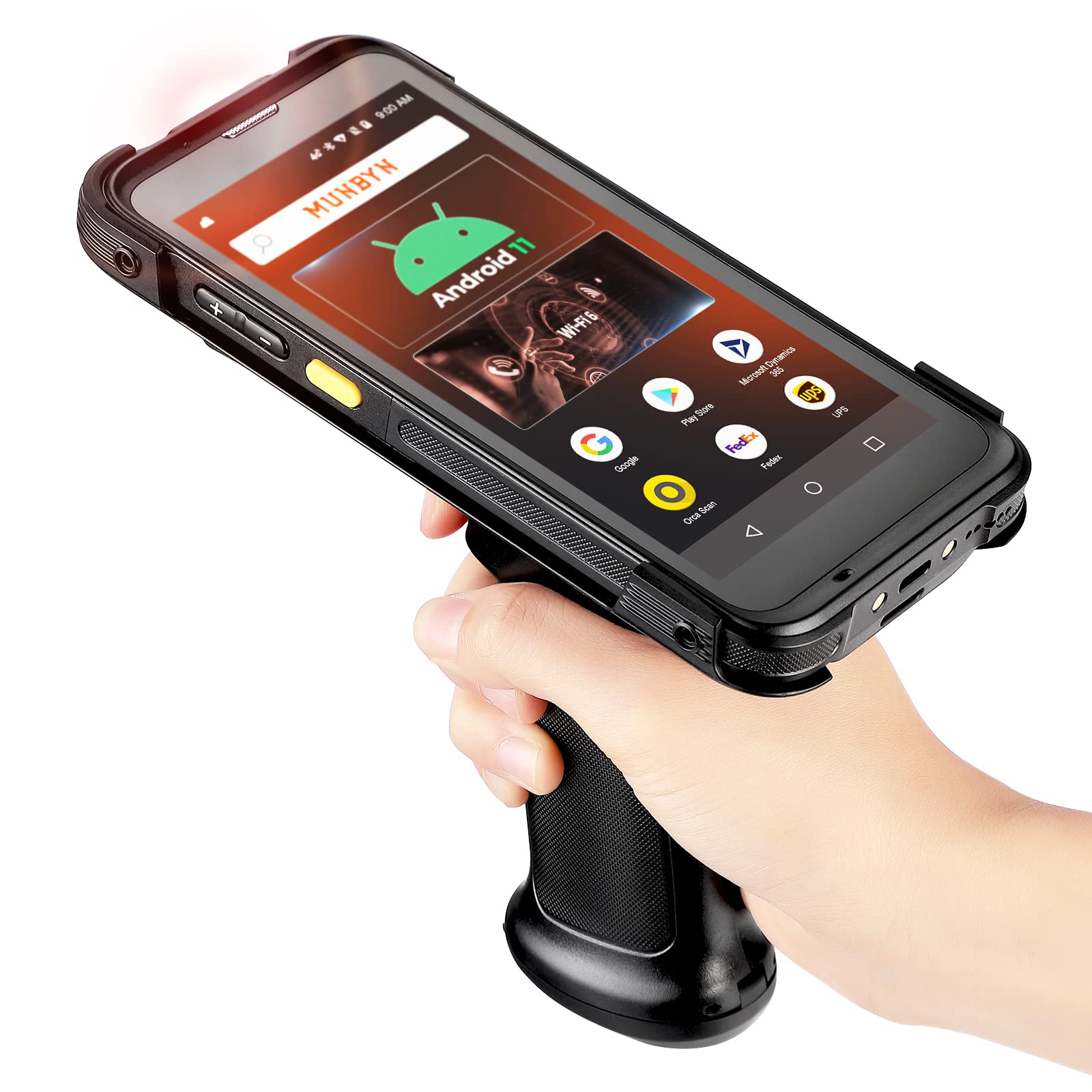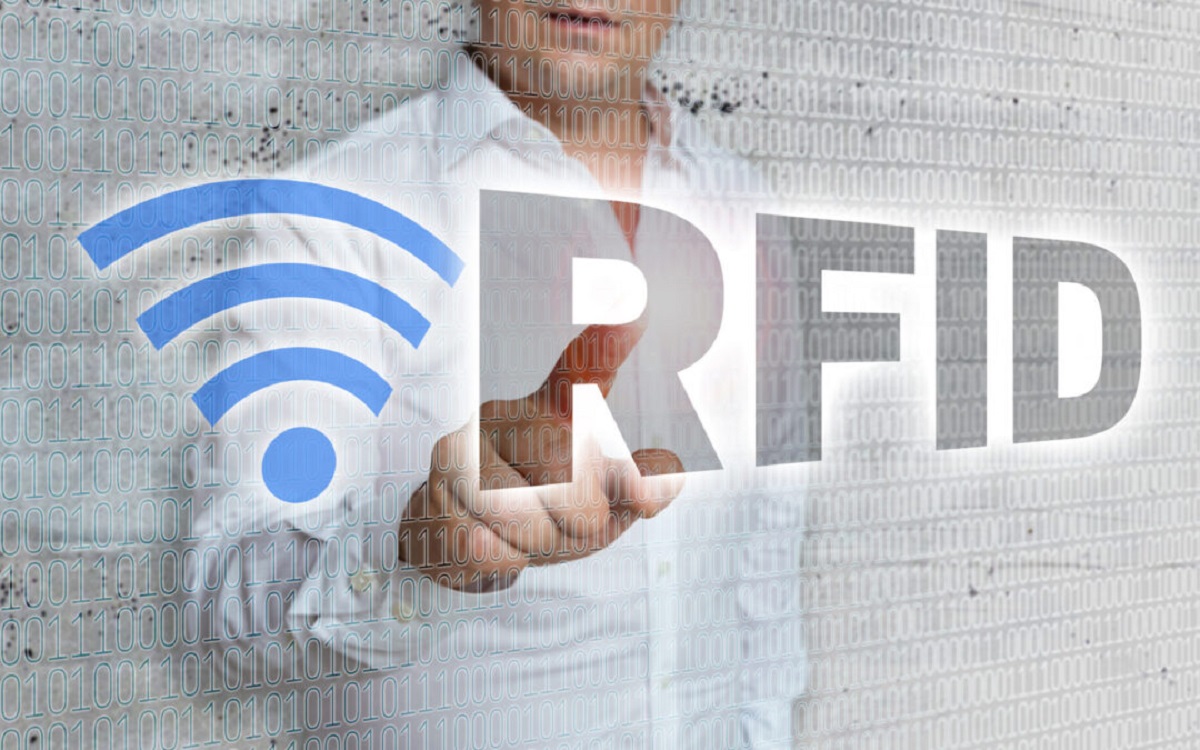Introduction
Welcome to our guide on how to get data from a barcode reader in PHP. In today’s fast-paced world, barcode readers have become an essential tool for businesses to efficiently track and manage inventory. With the power of PHP, you can easily integrate a barcode reader into your web application and extract valuable data from scanned barcodes.
Barcode readers, also known as barcode scanners, are electronic devices that can read and interpret barcodes. These barcodes consist of a series of parallel black bars and white spaces that represent different characters and numbers. By scanning a barcode, the reader can retrieve the corresponding information encoded within it.
Whether you want to create an online shopping platform, manage warehouse stock, or improve the checkout process, knowing how to work with a barcode reader in PHP is a valuable skill. In this guide, we’ll walk you through the process of setting up a barcode reader, connecting it to your server, and extracting and processing data from the scanned barcodes.
To begin, you’ll need a barcode reader that is compatible with your PHP environment. There are various types of barcode readers available, including handheld scanners, fixed-mount scanners, and smartphone apps. Make sure to choose a reliable and well-supported device that suits your specific needs.
Next, you’ll need a server environment that supports PHP. Most commonly, developers use Apache with PHP enabled, but you can also use other web servers such as Nginx or LiteSpeed.
In the rest of this guide, we’ll provide step-by-step instructions on how to connect and configure your barcode reader with PHP, read data from it, process the retrieved information, store it in a database, and display it on your web application. By the end, you’ll have a solid understanding of how to integrate a barcode reader into your PHP project and leverage its powerful data extraction capabilities.
What is a Barcode Reader?
A barcode reader, also known as a barcode scanner, is a device used to decode and interpret information encoded in barcodes. It is an essential tool in various industries, including retail, logistics, healthcare, and manufacturing. Barcode readers provide a quick and efficient way to capture data and automate processes.
Barcodes consist of a series of parallel black bars and white spaces that represent different characters and numbers. These symbols are printed on labels or directly on products and packages. The barcode reader uses a light source, such as a laser or LED, to scan the barcode by illuminating it and capturing the reflected light. It then converts the reflected light into electrical signals, which are decoded and translated into the corresponding information.
There are different types of barcode readers available, each with its own unique features and applications. Handheld barcode scanners, like the ones used at supermarket checkout counters, are the most common type. They are designed to be portable and offer flexibility in scanning various types of barcodes. Fixed-mount barcode scanners are stationary devices often used in manufacturing or automated systems, where the products move past the scanner. Mobile barcode scanners are smartphone applications that utilize the device’s camera to scan and decode barcodes.
Barcode readers can decode different types of barcodes, such as UPC (Universal Product Code), EAN (International Article Number), QR code (Quick Response Code), and Code 39, among others. Each barcode type encodes specific information, such as product identifiers, pricing data, website URLs, or tracking numbers.
With the advancement of technology, modern barcode readers have become faster, more accurate, and capable of reading barcodes from various angles and surfaces. Some advanced barcode readers can even read damaged or poorly printed barcodes, ensuring accurate data capture in challenging environments.
Barcode readers have revolutionized business operations by speeding up data entry, reducing errors, and improving efficiency. They have significantly streamlined processes like inventory management, product tracking, order fulfillment, and asset tracking. By quickly scanning barcodes, businesses can track products, manage stock levels, and access information instantly, leading to enhanced productivity and better customer service.
In the next section, we will dive deeper into how barcode readers work and discuss the process of setting up a barcode reader in PHP.
How do Barcode Readers Work?
Barcode readers use a combination of hardware and software to decode and interpret the information encoded in barcodes. Understanding the inner workings of barcode readers can help you better utilize them in your PHP projects.
When a barcode reader is activated, it emits a light source, usually a laser beam or LED, onto the barcode. The light reflects off the barcode and triggers a photosensitive sensor in the reader. This sensor captures the reflected light and converts it into an electrical signal.
The electrical signal is then processed by the hardware components of the barcode reader. These components include a decoder and a signal processing unit. The decoder analyzes the electrical signal and identifies the pattern of black bars and white spaces in the barcode. It then translates this pattern into a series of characters and numbers based on the encoding format used in the barcode.
The software component in the barcode reader takes over and further processes the decoded information. It performs error correction and verification to ensure accurate decoding. The software can also handle different types of barcodes, such as UPC or QR codes, by applying specific algorithms and decoding techniques tailored to each barcode type.
Modern barcode readers often come with additional features like image capture or built-in cameras. These features allow the reader to capture images of the barcode, which can be useful for documentation or troubleshooting purposes.
Barcode readers can interpret barcodes from various angles and orientations, making them flexible in different applications. Some barcode readers can even read barcodes that are damaged, poorly printed, or in low-light conditions by employing advanced image processing algorithms.
After the barcode reader decodes the information, it typically transfers the data to a connected computer or device. This transfer can be done via a cable connection, such as USB, or through wireless communication technologies like Bluetooth or Wi-Fi. The computer or device then processes the data for further use, such as storing it in a database or displaying it on a user interface.
Overall, barcode readers combine hardware and software components to accurately and efficiently decode barcodes. They play a crucial role in a wide range of industries by simplifying data capture, improving efficiency, and enhancing productivity.
In the next section, we will delve into setting up a barcode reader in PHP and connecting it to your server.
Setting Up a Barcode Reader in PHP
Setting up a barcode reader in PHP involves a few key steps to ensure proper integration and communication between the reader and your server environment.
1. Choose the Right Barcode Reader:
Before you can set up a barcode reader in PHP, you need to select a barcode reader device that is compatible with PHP and suits your specific needs. Consider factors such as the type of barcodes you will be scanning, the environment in which the reader will be used, and any additional features you require, such as wireless connectivity or image capture.
2. Connect the Barcode Reader to the Server:
Connect your barcode reader to the server by using the appropriate connection method supported by the reader and your server environment. This can be through USB, Bluetooth, Wi-Fi, or another communication interface. Ensure that your server has the necessary drivers or software installed to recognize and communicate with the barcode reader.
3. Install Required PHP Libraries:
Check if any specific PHP libraries or extensions are required for interacting with the barcode reader. Some barcode readers may require the installation of additional PHP libraries or extensions to facilitate communication and data retrieval. These libraries or extensions usually provide functions or classes for communicating with the barcode reader and decoding scanned barcodes.
4. Configure PHP Settings:
Adjust your PHP settings as needed to enable the necessary functionalities for working with the barcode reader. This might involve modifying PHP configuration files, like php.ini, to enable extensions or adjust communication settings. Check the documentation provided by the barcode reader manufacturer or consult the PHP manual for specific guidance on configuring PHP settings for barcode readers.
5. Test Communication and Data Retrieval:
Once you have connected the barcode reader, installed the required PHP libraries, and configured the PHP settings, it’s essential to test the communication between the reader and your PHP application. Develop a simple script that attempts to retrieve data from the barcode reader and display it on your web page or store it in a database. Verify that the barcode reader is functioning as expected and that the PHP application can successfully retrieve and process the scanned barcode data.
By following these steps and ensuring proper setup and communication, you can integrate a barcode reader into your PHP project successfully. In the next section, we will explore how to read data from the barcode reader in PHP and process the retrieved information.
Connecting the Barcode Reader to the Server
Connecting the barcode reader to the server is a crucial step in the setup process. It allows for communication between the reader and your PHP application, enabling you to retrieve and process scanned barcode data. Here are the key points to consider when connecting the barcode reader to the server:
1. Determine the Connection Interface:
The first step is to determine the appropriate connection interface between the barcode reader and your server. Barcode readers typically support various interfaces such as USB, Bluetooth, Wi-Fi, RS-232, or Ethernet. Choose the connection interface that aligns with your server’s capabilities and the barcode reader’s specifications.
2. Install Necessary Drivers or Software:
Depending on the barcode reader and the connection interface, you may need to install specific drivers or software on your server. These drivers or software act as an intermediary, allowing your server to recognize and communicate with the barcode reader. Check the documentation provided with your barcode reader for instructions on driver installation or software configuration.
3. Connect the Barcode Reader to the Server:
Once you have the appropriate drivers or software installed, physically connect the barcode reader to your server using the chosen connection interface. This could involve plugging in a USB cable, pairing the barcode reader with your server’s Bluetooth functionality, or configuring network settings for Wi-Fi or Ethernet connections.
4. Test the Connection:
To ensure that the barcode reader is successfully connected to the server, test the connection by scanning a barcode and verifying that the scanned data is received by your PHP application. Write a simple PHP script that listens for input from the barcode reader and displays the scanned barcode data. If the scanned barcode data appears as expected, it indicates a successful connection between the barcode reader and the server.
5. Consider Security Measures:
When connecting the barcode reader to the server, it’s important to consider security measures to protect your system and data. If the barcode reader requires wireless connectivity, ensure that appropriate security protocols such as encryption and authentication are implemented. Regularly update the firmware and software of the barcode reader to patch any security vulnerabilities.
Connecting the barcode reader to the server is a crucial step in leveraging its capabilities within your PHP application. By following these steps and ensuring a successful connection, you can proceed with reading data from the barcode reader in PHP and processing the retrieved information.
Reading Data from the Barcode Reader in PHP
Now that you have successfully connected the barcode reader to your server, it’s time to start reading data from the barcode reader in your PHP application. Here’s how you can accomplish this:
1. Identify the Input Method:
Determine the specific method or function provided by the barcode reader’s supported library or extension to read data. Most barcode readers act as input devices, sending the scanned barcode data directly to your PHP application. Depending on the library or extension, you may need to configure callback functions or event handlers to capture the data when it is received.
2. Read Data in Real-time:
Use the appropriate PHP function or method to read data from the barcode reader in real-time. This typically involves opening a connection or stream to the barcode reader and continuously listening for incoming data. Whenever a barcode is scanned, the data is sent to your PHP application, which can then extract and process it.
3. Retrieve and Process the Scanned Data:
Once the barcode data is received in your PHP application, extract and process it as needed. This could involve validating the scanned data, performing any necessary transformations or formatting, or even performing lookups or database queries based on the scanned barcode.
4. Integrate Error Handling:
Barcode scanning is not always error-free, and it’s essential to handle potential errors or exceptions that may occur during the reading process. Implement error handling mechanisms within your PHP code to gracefully handle situations such as invalid barcode data or communication interruptions with the barcode reader. This will ensure that your application remains stable and responsive.
5. Optimize Performance:
Consider optimizing the performance of your barcode reading process. Depending on the volume of barcode scans and the requirements of your application, you may need to optimize the code for efficiency. This can include techniques such as buffering scans, using asynchronous operations, or implementing caching mechanisms to reduce unnecessary processing overhead.
Remember to test your code thoroughly to ensure that it properly reads data from the barcode reader and handles different scenarios. This includes testing with various types of barcodes and ensuring compatibility with different barcode formats.
In the next section, we will explore how to process the data retrieved from the barcode reader in PHP and store it in a database for further use.
Processing the Data from the Barcode Reader
Once you have successfully read the data from the barcode reader in your PHP application, the next step is to process the retrieved information. Here are the key steps to effectively process the data from the barcode reader:
1. Validate the Scanned Data:
Before further processing, it is crucial to validate the scanned data to ensure its integrity and accuracy. Verify that the scanned data conforms to the expected format or structure based on the barcode type being used. This step helps prevent errors or incorrect data from entering your system.
2. Extract Relevant Information:
Based on the barcode type and the specific needs of your application, extract the relevant information from the scanned data. This could involve parsing the barcode to retrieve product codes, serial numbers, or other relevant details. Use string manipulation functions or regular expressions in PHP to extract the necessary information from the scanned data.
3. Perform Data Transformation and Formatting:
If necessary, perform any required data transformations or formatting to make the extracted information more structured or compatible with your system. For example, you might need to convert the extracted data into a specific data type, apply a specific date format, or reformat the data for consistent storage or display purposes.
4. Validate and Cleanse the Data:
Once the data is extracted, validate and cleanse it to ensure its accuracy and consistency. Apply any necessary data cleaning techniques, such as removing leading or trailing whitespace, removing special characters, or normalizing data values. This step is essential to ensure data quality and avoid issues in subsequent processing or storage.
5. Perform Additional Data Processing:
Depending on the requirements of your application, you may need to perform additional processing on the extracted data. This could include performing calculations, performing lookups against external data sources, or applying business logic to derive additional information or trigger specific actions based on the scanned data.
6. Incorporate Error Handling:
Implement a robust error handling mechanism to handle any unexpected issues that may arise during the data processing stage. This includes handling exceptional cases, such as invalid or incomplete data, network or system failures, or errors in data mapping or transformation.
By following these steps, you can effectively process the data retrieved from the barcode reader in your PHP application. The processed data can then be stored in a database for further use or displayed on your web application.
In the next section, we will discuss how to store the data from the barcode reader in a database using PHP.
Storing the Data in a Database
Once you have processed the data retrieved from the barcode reader in your PHP application, you may need to store it in a database for further use or analysis. Here are the key steps to store the data in a database using PHP:
1. Choose a Database Management System:
Select a suitable database management system (DBMS) that aligns with your application requirements. Popular options include MySQL, PostgreSQL, SQLite, or Microsoft SQL Server. Consider factors such as scalability, performance, ease of use, and compatibility with your server environment.
2. Create a Database Schema:
Design the structure of your database by creating the necessary tables and defining the relevant fields to store the barcode data. Consider the types of data you need to store, such as product information, timestamps, or user details. Define appropriate primary keys, indexes, and relationships between tables, if necessary.
3. Establish a Database Connection:
In your PHP application, establish a connection to the database using the appropriate functions or libraries provided by the chosen DBMS. This typically involves providing the necessary connection credentials such as the host, username, password, and database name.
4. Prepare and Execute SQL Statements:
To insert the processed data into the database, prepare the necessary SQL statements using parameterized queries or prepared statements in PHP. This helps prevent SQL injection attacks and enhances the security of your application. Bind the processed data to the prepared statements and execute them to insert the data into the appropriate tables.
5. Handle Errors and Exceptions:
Implement effective error handling and exception management in your PHP code to handle any issues that may occur during the database operations. Take appropriate actions when errors arise, such as logging error messages, displaying user-friendly error notifications, or gracefully handling exceptional cases.
6. Test and Validate Data Insertion:
After executing the SQL statements, verify that the data has been successfully inserted into the database. Retrieve the inserted data using appropriate SELECT queries and validate that it matches the expected result. This step ensures data integrity and confirms the successful storage of the processed barcode data.
By following these steps, you can store the processed data from the barcode reader in a database using PHP. This allows for easy retrieval, querying, and management of the collected information. In the next section, we will discuss how to display the stored data in your web application.
Displaying the Data
Once you have successfully stored the data from the barcode reader in a database using PHP, it’s time to display that data in your web application. Here are the key steps to effectively display the data:
1. Retrieve Data from the Database:
Begin by retrieving the stored data from the database using SQL queries in your PHP code. Craft the appropriate SELECT statements to retrieve the relevant data that you want to display. Consider using filters or conditions to narrow down the dataset and retrieve specific information based on your requirements.
2. Organize and Structure the Data:
Once the data is retrieved, organize and structure it in a way that is meaningful and user-friendly. This could involve grouping similar data together, sorting it based on specific criteria, or formatting it for improved readability. PHP offers various built-in functions to manipulate and format data, such as array manipulation functions or date formatting functions.
3. Design the User Interface:
Create an appealing user interface (UI) to present the retrieved data from the barcode reader. Consider the visual elements and layout that will best showcase the information. Use HTML and CSS to design a clean and intuitive UI, ensuring that it is responsive and visually pleasing across different devices and screen sizes.
4. Use HTML and PHP to Display the Data:
Incorporate the retrieved data into your HTML markup using PHP. Utilize loops and conditional statements to dynamically generate HTML elements based on the data. This allows you to display the data in a structured manner and adapt the UI based on the available data.
5. Apply Formatting and Styling:
Enhance the presentation of the displayed data by applying appropriate formatting and styling. Use CSS to style the HTML elements, choosing fonts, colors, and spacing that align with your application’s design. Apply CSS classes or styles selectively to different data elements to improve readability and visual hierarchy.
6. Implement Pagination or Filtering:
If the retrieved data is extensive, consider implementing pagination or filtering mechanisms to improve user experience and allow users to navigate through the data more efficiently. This ensures that the displayed data is manageable and easily digestible.
7. Test and Validate the Display:
Thoroughly test the display of the data in your web application, ensuring that the retrieved information is accurately presented and properly formatted. Verify that the UI is responsive, any pagination or filtering functions work as expected, and the overall user experience is smooth.
By following these steps, you can effectively display the data from the barcode reader in your web application. Whether it’s presenting product information, inventory data, or any other relevant details, a well-designed and user-friendly display will enhance the usability and value of your application.
In the next section, we will conclude our guide and summarize the key points covered throughout the article.
Conclusion
In this comprehensive guide, we explored how to get data from a barcode reader in PHP. We learned about the significance of barcode readers in various industries and understood their working principles. By following the steps outlined in this guide, you can successfully set up a barcode reader in PHP, connect it to your server, read data from it, process the retrieved information, store it in a database, and display it in your web application.
We started by understanding the fundamentals of barcode readers and their role in efficient data capture and automation. We then discussed the important steps involved in setting up a barcode reader in PHP, including selecting the right device, connecting it to the server, installing the necessary libraries, configuring PHP settings, and testing the connectivity.
Next, we delved into reading data from the barcode reader in PHP. We examined methods for extracting the data in real-time, validating and processing the scanned information, and incorporating error handling to ensure robust data capture and accuracy.
We also explored the process of storing the retrieved data in a database. We discussed the selection of an appropriate DBMS, creating a database schema, establishing a database connection, executing SQL statements, and validating the data insertion process.
Furthermore, we looked into displaying the stored data in a web application. We covered the steps of retrieving data from the database, organizing and structuring the data, designing the user interface, using HTML and PHP to display the data, applying formatting and styling techniques, and implementing pagination or filtering for better user experience.
By applying the knowledge and techniques provided in this guide, you have gained the skills to effectively integrate a barcode reader into your PHP projects, providing streamlined data capture, efficient processing, and meaningful display of the barcode data.
Remember, the possibilities with barcode readers in PHP extend beyond inventory management. You can leverage barcode data for various purposes, such as user authentication, product tracking, event ticketing, or library management.
Now, armed with the knowledge and steps outlined here, you can utilize the power of barcode readers in your PHP applications to enhance productivity, automate processes, and provide seamless user experiences.







